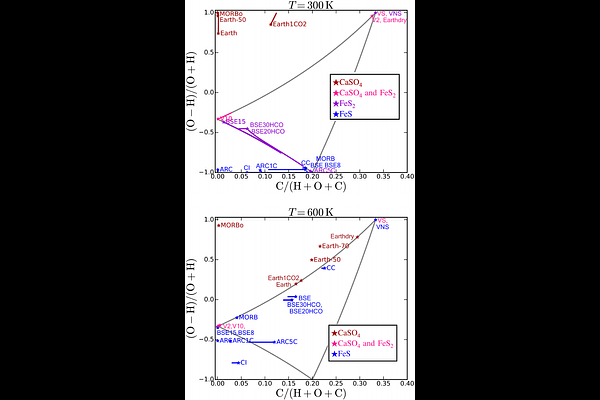The atmospheres of rocky exoplanets III. Using atmospheric spectra to constrain surface rock composition

The atmospheres of rocky exoplanets III. Using atmospheric spectra to constrain surface rock composition
Oliver Herbort, Leon Sereinig
AbstractContext. The crust composition of rocky exoplanets with a substantial atmosphere can not be observed directly. However, recent developments start to allow the observation and characterisation of their atmospheres. Aims. We aim to establish a link between the observable spectroscopic atmospheric features and the mineralogical crust composition of exoplanets. This allows to constrain the surface composition just by observing transit spectra. Methods. We use a diverse set of total element abundances inspired by various rock compositions, Earth, Venus, and CI chondrite as a basis for our bottom-to-top atmospheric model. We assume thermal and chemical equilibrium between the atmosphere and the planetary surface. Based on the atmospheric models in hydrostatic and chemical equilibrium with the inclusion of element depletion due to cloud formation theoretical transit spectra are calculated. Results. The atmospheric type classification allows constraints on the surface mineralogy especially with respect to sulphur compounds, iron oxides and iron hydroxides, feldspars, silicates and carbon species. Spectral features provide the possibility to differentiate the atmospheric types and thus allow some constraints on the surface composition.